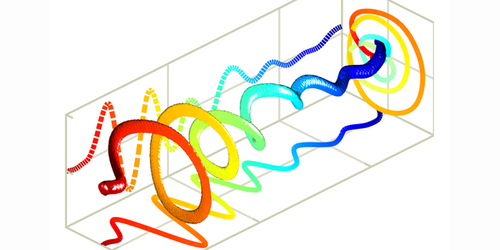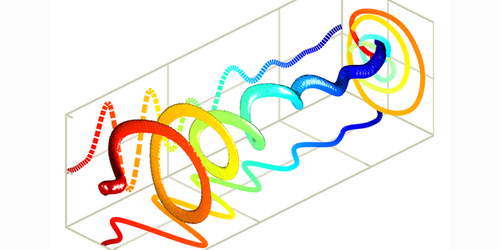Ultrafast Oscilloscope for Ultrashort Electron Beam
Ultrashort electron beams are used in applications ranging from particle accelerators to biological imaging. Optimal operation of these technologies requires an understanding of the full time-domain behavior of the electron beam. However, existing characterization methods lack sufficient temporal resolution to describe the shape and arrival time of electron bursts, particularly when the electrons have high energies. Lingrong Zhao of Shanghai Jiao Tong University in China and colleagues now demonstrate a solution to this problem with an oscilloscope device that can encode the entire temporal profile of a relativistic electron beam using a THz pulse.
Traditional cathode-ray oscilloscopes measure electrical signals using a beam of electrons. In the new oscilloscope, Zhao and colleagues characterize an electron beam using a high-frequency, circularly polarized external electromagnetic pulse. This THz pulse interacts with the beam as they both pass through a dielectric waveguide, forcing the electrons into a helical path. As a result, different parts of the beam hit the oscilloscope screen in different places, spreading the beam’s temporal profile spatially across the detector.
In their demonstration of the new method, the team measured the shape of an ultrashort relativistic electron beam with a resolution of 24 femtoseconds. They also determined the beam’s arrival time to within 3 femtoseconds. They say that their oscilloscope could be implemented in existing free-electron lasers and ultrafast electron diffraction experiments, providing these technologies with higher time-resolution imaging capabilities. Zhao and colleagues also believe that their oscilloscope could achieve subfemtosecond resolution if they either increase the electric field strength of the THz pulse or decrease the diameter of the waveguide.
This research is published in Physical Review Letters.
–Matthew R. Francis
Matthew R. Francis is a physicist and freelance science writer based in Cleveland, Ohio.





